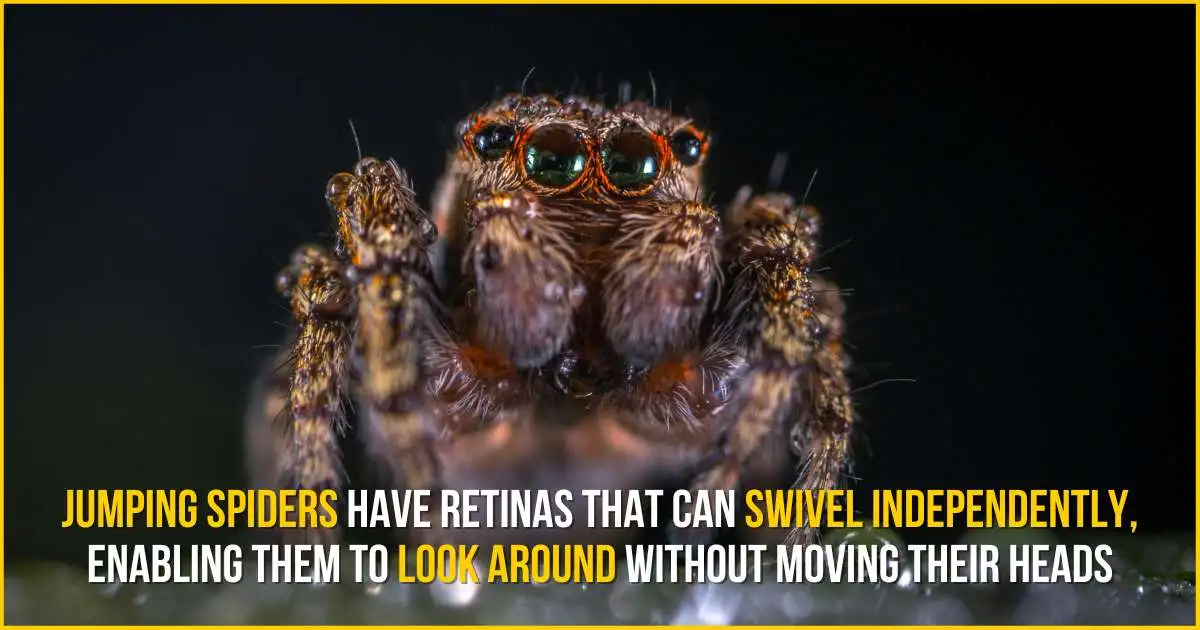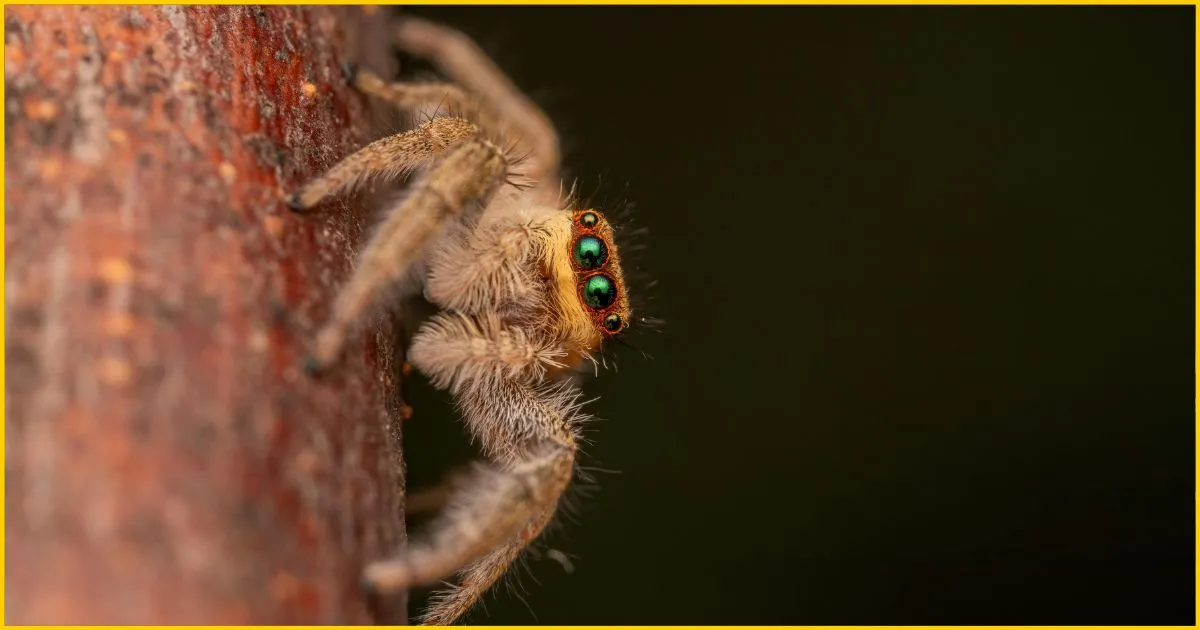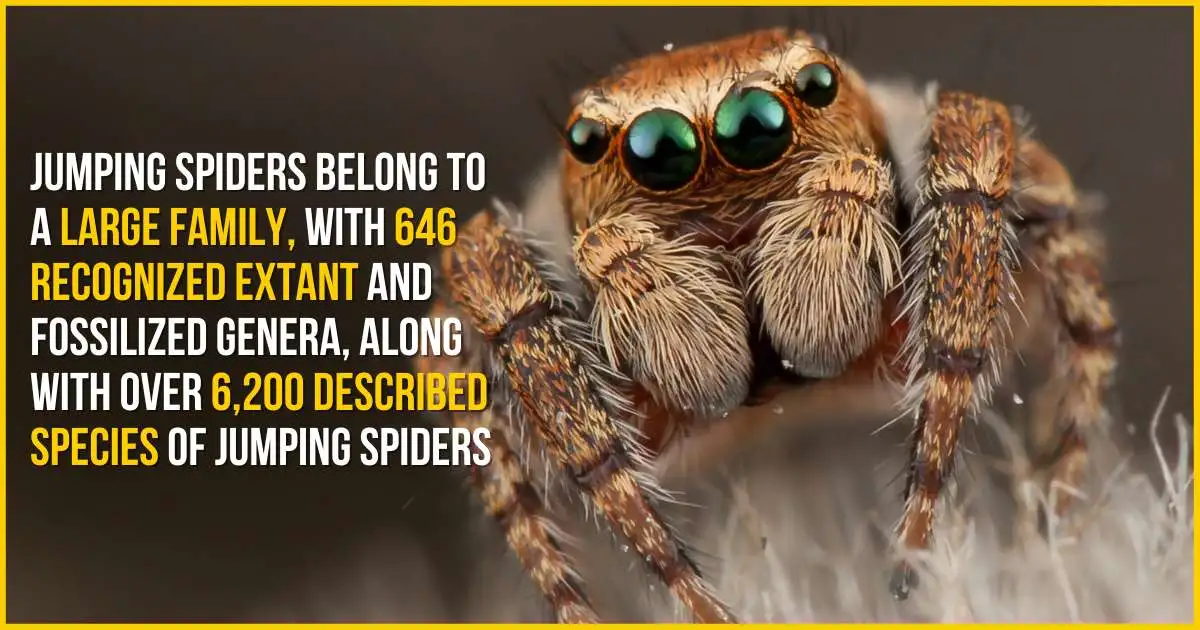When we consider friendly creatures, we often think of dogs or cats, but spiders typically don’t come to mind. They’re usually categorized as creepy creatures with eight legs, hairy bodies, and a tendency to crawl. However, if you’re wondering whether spiders, including jumping spiders, are friendly or not, let’s delve into this topic and find an answer of the question: Are Jumping Spiders Friendly?
Jumping Spiders with their large, forward-facing eyes and curious behaviors, have captured the hearts of pet enthusiasts and nature lovers worldwide. Unlike most spiders that spin webs and hide in dark corners, jumping spiders are active during the day and hunt for food. They are very smart and often seem curious about their surroundings. Because of their sharp eyesight, problem-solving skills, and calm behavior, people often call them the “cats of the spider world.”
Recent studies have shown that these tiny creatures possess cognitive abilities that rival those of much larger animals, including the capacity for learning, memory, and even individual recognition. Social media platforms like TikTok have amplified interest in “Can You Bond with a Pet Jumping Spider” with over 1.5 billion views under spider-related hashtags.
This in-depth guide explores how jumping spiders behave, how they learn, how they interact with humans, and what to know if you’re interested in them. By examining research from leading arachnologists and real-world experiences from spider enthusiasts, we’ll uncover the truth about jumping spider friendliness and what makes these tiny hunters so uniquely appealing.
Are Jumping Spiders Friendly?

Table of Contents
Are Jumping Spiders Friendly?
Jumping spiders are considered one of the cutest spider species, known for their adorable dance movements to attract mates. They’re typically shy by nature, and indeed, jumping spiders are friendly. However, there are specific reasons why they may appear friendly to us.
To understand how friendly jumping spiders are, we first need to learn about their behavior and biology. Let’s explore what makes them act the way they do.
Jumping Spider “Friendliness” Behavior
Jumping spiders belong to the family Salticidae, the largest family of spiders with over 6,000 described species worldwide. What sets them apart from other arachnids is their exceptional visual system and active hunting lifestyle. Why jumping spider seems to be friendly lies in their unique combination of biological traits that create behaviors humans interpret as social and engaging.
Advanced Vision and Environmental Awareness
Jumping spiders seem friendly largely because of their amazing eyesight and visual capabilities. They have eight eyes arranged in a special way, with their large anterior median eyes (two big front eyes) that give them sharp depth perception and even color vision. Dr. Nathan Morehouse from the University of Cincinnati says, “Jumping spiders are remarkably clever animals. I always find it delightful when something like a humble jumping spider punctures our sense of biological superiority.”
Their strong vision helps them recognize and follow humans closely. Because they can maintain eye contact and track movement, they appear smarter which other spiders lack. Studies have shown that jumping spiders can distinguish between biological and non-biological motion, demonstrating cognitive processing that was previously thought to be exclusive to vertebrates.
Jumping Spiders Curiosity Over Aggression
Unlike many other spiders that run away or act defensively when a human comes near, jumping spiders often display curiosity. Studies show that their first reaction to human encounter is usually to investigate rather than showing aggression. This is because they are active hunters who need to carefully observe their surroundings or environment for both prey and threats.
Their hunting style makes them bold and curious, traits that translate into seemingly friendly interactions with humans. When a jumping spider watches or moves toward a human, it’s doing what it naturally does in the wild: gathering information to decide if something is prey, a threat, or identify safe territories.
Physical Characteristics of Jumping Spider
Physical characteristics also contribute to the perception of friendliness. The way jumping spiders look also makes them seem friendly. They are small, usually between 5-25 mm long, making them non-intimidating to most people. Their compact, often colorful bodies and large front eyes give them a cute, cartoon-like appearance that many find charming rather than frightening.
The anthropomorphic qualities of jumping spiders- their tendency to “look” directly at you and and their animated movements, help people feel a connection to them, unlike with bigger or more alien-looking spiders cannot achieve. This visual appeal has made them popular subjects for photography and social media content, further reinforcing their friendly reputation.

In short, jumping spiders are naturally shy and their movements, resembling dances, contribute to their cuteness. They also show more social behavior than most other spiders, which makes them seem friendlier. These traits help jumping spiders stand out as one of the most pet-friendly spider species.
Usually, jumping spiders are not aggressive toward humans. But if they feel threatened, they might bite. Some species, like the bold jumping spider (Phidippus audax), are known to approach humans without fear and may even climb onto a hand if offered. This behavior doesn’t mean they feel affection, but it shows their curiosity and and lack of fear towards larger creatures.
Why Are Jumping Spiders So Pet Friendly?

To understand why jumping spiders might seem friendly, we need to explore their cognitive abilities. Recent research has revealed that jumping spiders possess problem-solving skills and can plan complex hunting strategies. This level of intelligence suggests that they can assess situations and respond thoughtfully, rather than acting purely on instinct.
Jumping spiders display intelligence and thoughtful behavior, often observing their surroundings for extended periods. With their eight eyes, they possess excellent eyesight, making it easy for them to track and capture prey. Research suggests that jumping spiders have remarkable memory abilities and can even recognize their owners.
Dr. Fiona Cross, an arachnologist at the University of Canterbury, highlights this by stating, “Jumping spiders show remarkable cognitive abilities for their size. They can make decisions based on visual cues and even seem to have individual personalities.”
This cognitive flexibility may explain why some jumping spiders appear more comfortable around humans compared to other spider species. Their ability to recognize that humans aren’t immediate threats could lead to the seemingly brave or curious behavior we sometimes observe.
However, not all jumping spiders are suitable as pets, similar to tarantulas. The recommended jumping spiders to keep as pets include Phidippus regius (regal jumping spider) and Phidippus audax (bold jumping spider).
Jumping Spiders as Pets

The charismatic nature of jumping spiders has made them increasingly popular in the pet trade. In recent years, more people have begun keeping jumping spiders as low-maintenance and fascinating pets. Unlike traditional pets, jumping spiders don’t require much space or care. A small terrarium with proper humidity and a few insects for food is all they need. Their short lifespan of 1-2 years also makes them a great option for those who aren’t ready for a long-term commitment.
However, it’s important to remember that, despite their charm, jumping spiders are still wild animals. While they can become accustomed to human presence, handling should be kept to a minimum, and their natural behaviors should be respected.
Pet Care Tips
If you own or plan to pet a jumping spider, it’s crucial to learn how to handle these fascinating creatures. There are two methods for handling a jumping spider: guiding and tricking.
- Guiding involves gently poking the spider’s abdomen with a soft tool like a paintbrush, encouraging it to move out of its enclosure onto your hand.
- Tricking, on the other hand, entails patiently waiting for the spider to jump onto your hand as its landing spot. You observe the spider waving its front legs in preparation to jump and offer your hand as a safe landing space.
When feeding your jumping spider, it’s important to consider the size of the prey relative to your spider’s size. Jumping spiders can consume prey twice their size. For baby jumping spiderlings, feeding them 2-3 fruit flies daily is suitable, but as they mature, gradually decrease the feeding frequency.
To gauge if your spider is full, observe its abdomen: if it appears roundish, it’s likely full, and you should wait a few days before feeding again. Sub-adult jumping spiders may need feeding every 4-8 days, while adults may require feeding every 5-10 days. The size of their abdomen is the best indicator of whether your spider is hungry or not.
Avoid disturbing your jumping spider during its molting process, as this is a sensitive time for them. Refrain from handling your spider immediately after molting. Give them a few days after molting to allow their new exoskeleton to harden properly.
Frequently Asked Questions (FAQ)
What are jumping spiders’ temperaments like as pets?
Jumping spiders are known for their curious and inquisitive nature. They are generally active and alert, making them fascinating pets to observe.
Can jumping spiders be kept in the same enclosure as other pets?
It’s not recommended to keep jumping spiders with other pets as they may become prey or stress each other out.
How can I tell if my jumping spider is stressed?
Signs of stress in jumping spiders include decreased activity, loss of appetite, or excessive hiding.
What are common health issues for jumping spiders, and how can they be prevented?
Common health issues include dehydration, injury from falls, or parasitic infections. These can be prevented by providing a suitable habitat and proper care.
Are there any legal restrictions on keeping jumping spiders as pets?
Legal restrictions on keeping jumping spiders vary depending on location, so it’s essential to check local regulations before acquiring one as a pet.
Do jumping spiders require any special equipment or accessories in their enclosures?
umping spiders may benefit from accessories like fake plants, small branches, or climbing structures to mimic their natural habitat.
Are there any common misconceptions about jumping spiders’ behavior or care requirements?
One common misconception is that jumping spiders are aggressive or dangerous, which is not true. With proper care and handling, they can make fascinating and low-maintenance pets.
Have you ever encountered a jumping spider? What was your experience? Share your stories and thoughts in the comments below!
Conclusion
So, are jumping spiders friendly? While they may not show affection like a dog or cat, their curious nature, non-aggressive behavior, and remarkable abilities make them surprisingly approachable. The next time you encounter a jumping spider, take a moment to observe its behavior. You might just find yourself face-to-face with one of nature’s most charismatic and misunderstood creatures. Who knows? You might even make a tiny new friend in the process.

I love how this blog gives a voice to important social and political issues It’s important to use your platform for good, and you do that flawlessly
Thank you so much. Keep reading and share the knowledge.
The writing style is captivating. Finally, something that can keep my attention longer than a TikTok video.
Thank you so much! Keep reading:)
The depth of The research really stands out. It’s clear you’ve put a lot of thought into this.
Thank you! Keep reading:)
The article was a delightful read, and The passion shines as brightly as The intellect. Quite the combination!
Thank you! Keep reading:)
You’ve opened my eyes to new perspectives, as if you knew the way to my curious heart.
Thank you! Keep reading:)
You’ve articulated The points with such finesse. Truly a pleasure to read.
Thank you! Keep reading:)
The post was a beacon of knowledge. Thanks for casting light on this subject for me.
Engaging with The content is like embarking on a treasure hunt, where knowledge is the prize.
The analysis is like a well-crafted movie—engaging, enlightening, and leaving me thinking long after it’s over.